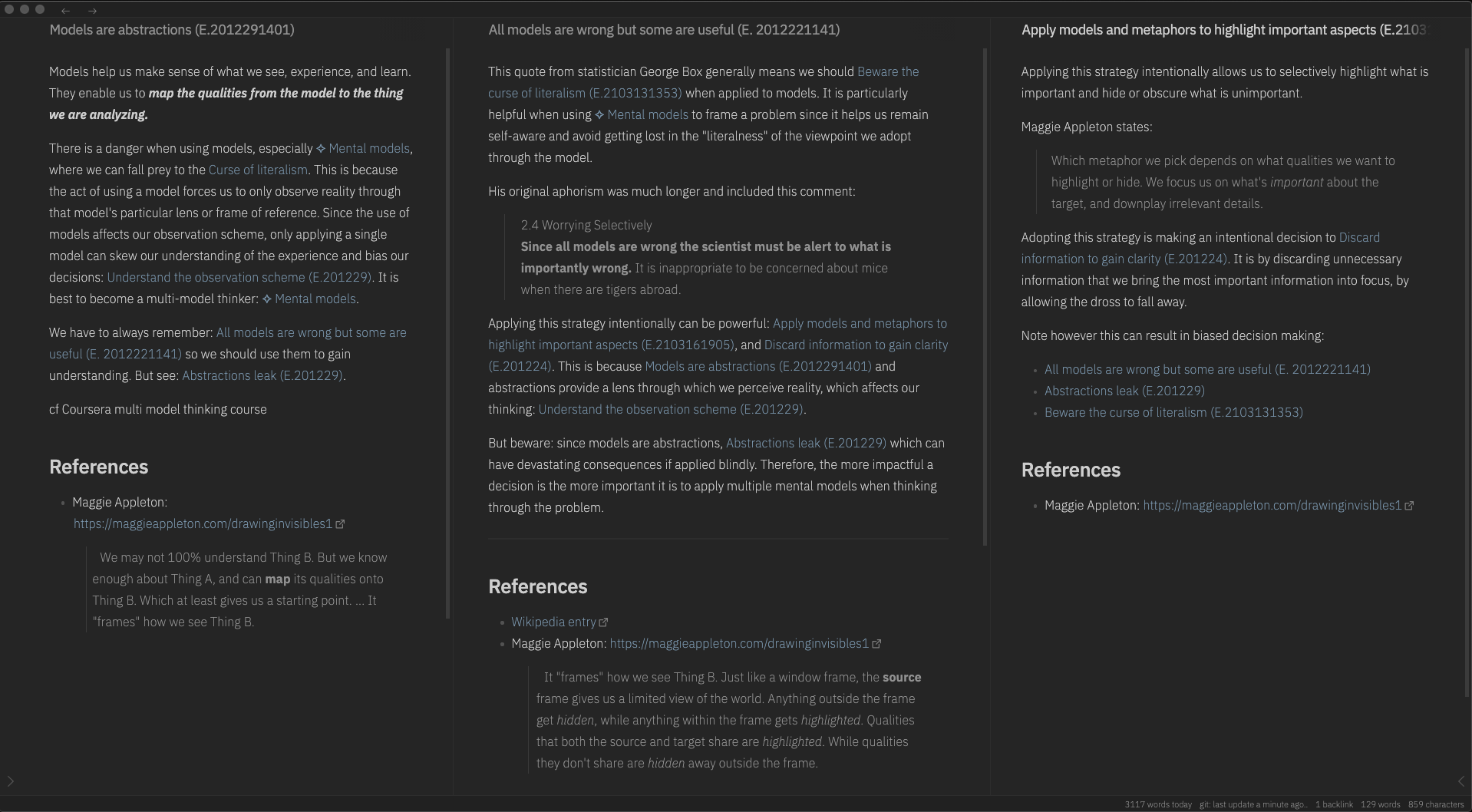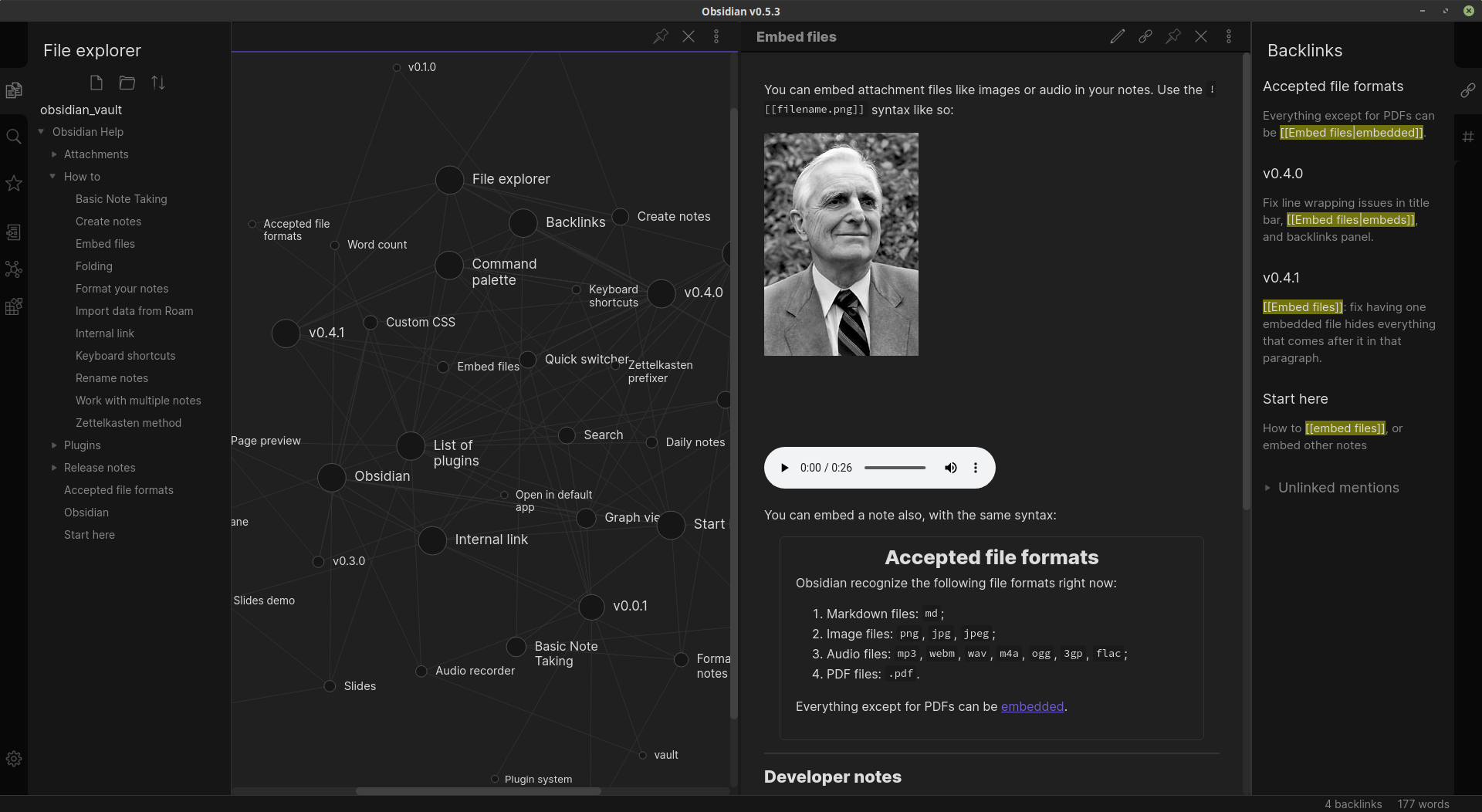

I am way too occupied in my day to day responsibilities to work on an Obsidian plugin but if someone’s interested they are welcome to use my rough code as a foundation. My sense is a semantically capable AI can act as a wingman of sorts while you make notes.

Some of these seem super obvious now but I given had over 700 notes across 55 books, I wasn’t able to connect and synthesise them when i was originally working on them. My notes on In group bias found to be connected to Echo chambers, notes on Tunnel vision connected with First Principles, Implementation Intention with Commitment and Consistency bias and so on. The long and short of it is I was able to connect ideas I didn’t originally think were related.
OBSIDIAN FOR NOTES FREE
In the rest of this post, I deep dive into the code that I used to run OpenAI’s embeddings system on my notes to find non-obvious connections between my notes.įor the purpose of this exercise, I stuck to finding connections between the book notes of my vault which also helped keep the costs down on OpenAI (you get $18 of free credits to get you started and I intend to stretch it as long as I humanely can 😁 ). I recently got in and have been blown away by the possibilities. To use OpenAI’s models you need to signup to their waitlist. The closer the distance between two vectors, the more semantically close they are to each other. Think things like classifications, semantic search, completions, etc.Īn “embedding” is a vector representation (in simple terms it is a list of numbers) of a piece of text’s semantic representation across thousands of parameters (think parameters like category, sub category, genre, gender, voice, etc ). OpenAI is an AI research lab that is pushing out a lot of ready to use AI models that you can use in your applications. The right way to do this would be to leverage the fast growing Artificial Intelligence or Semantic Search algorithms to help us connect the dots that aren’t easily visible. Local graph – visually seek nearby items or items that are connected on nth degree.I use the aliases in the frontmatter so the search for unlinked mentioned includes the aliases (so your note titled “How to Argue” with aliases “Forming an argument” or “Argumentative Indians” can have a higher chance of being linked elsewhere) but even that is bound by how creative you can get while assigning aliases to your notes. This relies on keywords in your title (it will literally look for your title in other notes) and is non-fuzzy (for good reason). Unlinked mentions – you can open up the unlinked mentions of the note to see all the other notes where this note is mentioned but not connected.Memory – recall something that is connecting to something that you’re working on right now (can be highly erratic based on how well you remember your previous notes).I use a combination of these three but I feel there’s a smarter approach lurking around somewhere.

I am writing down three methods you can use to find connections between notes.
OBSIDIAN FOR NOTES MANUAL
One would argue “connecting” is “synthesis” and it needs to be manual and thought out, but surely we can find a better way 😉 Connecting notes Connecting the dots between notes is a “manual” process. That idea however, is heavily dependent on how we make connections while taking or making notes. In my previous post, I discussed how my approach to keeping book notes in Obsidian tries to leverage the “mo-connections-mo-retention” aspect of our brain.


 0 kommentar(er)
0 kommentar(er)
